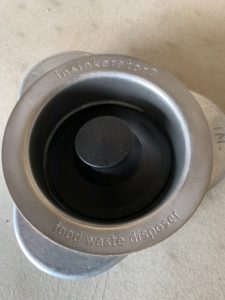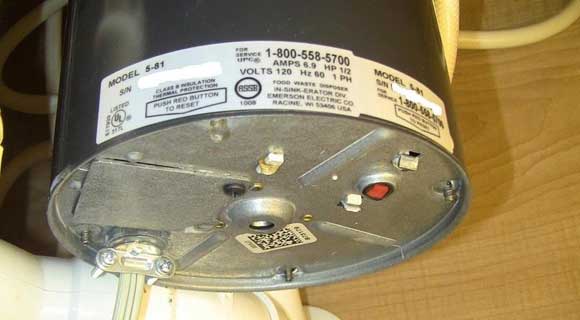Useful Techniques for Repairing a Dripping Garbage Disposal
Useful Techniques for Repairing a Dripping Garbage Disposal
Blog Article
We have stumbled upon the article pertaining to Why Is below on the internet and reckoned it made good sense to talk about it with you on this page.

Garbage disposals are crucial cooking area appliances that assist in dealing with food waste successfully. Nevertheless, a leaking waste disposal unit can be a discouraging and unpleasant trouble to take care of. Luckily, several leaks can be fixed conveniently with a few easy steps. In this short article, we will certainly discuss exactly how to take care of a leaking garbage disposal properly.
Intro
Waste disposal unit are set up under kitchen area sinks and are made to shred food waste right into smaller sized pieces, enabling it to travel through the plumbing system easily. While these gadgets are normally reputable, leakages can occur over time as a result of deterioration, loose links, or damage to the system.
Step-by-Step Guide to Taking Care Of a Dripping Garbage Disposal
Shut off the Power
Prior to attempting any kind of repair work, guarantee that the power to the waste disposal unit system is switched off to avoid the danger of electrical shock.
Find the Leakage
Identify the specific location of the leak and determine the reason
Tighten up Links
Make use of a wrench to tighten any kind of loosened links in between the disposal unit and the pipes system.
Change Seals or Gaskets
If the leakage results from worn seals or gaskets, get rid of the old parts and change them with brand-new ones.
Patching Cracks or Openings
For cracks or holes in the disposal device, use epoxy or an ideal patching material to secure the broken area.
Identifying the Resource of the Leakage
Prior to attempting to take care of a dripping waste disposal unit, it is essential to recognize the resource of the leakage. This can usually be done with aesthetic evaluation or by carrying out simple tests.
Visual Evaluation
Examine the garbage disposal device very carefully for any indications of water leak. Pay very close attention to areas around seals, gaskets, and connection factors.
Testing for Leaks
One method to examine for leakages is by running water with the disposal unit and checking for any noticeable indications of leak.
Usual Sources Of Leakages in Garbage Disposals
Worn Seals and Gaskets
Seals and gaskets play a vital duty in stopping water from leaking out of the waste disposal unit. With time, these components can degrade, causing leakages around the disposal unit.
Loose Connections
The connections between the garbage disposal and the plumbing system can become loose over time, causing water to leakage out throughout operation.
Cracks or Holes in the Disposal Unit
Physical damage to the waste disposal unit, such as fractures or holes in the real estate, can additionally cause leaks.
Devices and Products Needed for Taking Care Of a Leaking Waste Disposal Unit
Prior to starting the repair process, collect the required devices and products, consisting of a screwdriver, adjustable wrench, plumber's putty, replacement seals or gaskets, and epoxy or patching product for fixing cracks or holes.
Checking the Waste Disposal Unit After Fixing
As soon as the repair work is total, evaluate the garbage disposal by running water through it to make certain that the leakage has been fixed.
Preventive Upkeep Tips to Stay Clear Of Future Leakages
To prevent future leaks, it is necessary to perform routine maintenance on your waste disposal unit. This consists of maintaining it tidy, staying clear of putting non-food products or tough items down the disposal, and occasionally checking for leakages or various other concerns.
Conclusion
Finally, fixing a dripping garbage disposal is a relatively uncomplicated process that can be finished with fundamental tools and materials. By following the actions outlined in this write-up and exercising preventive maintenance, you can keep your garbage disposal in good working problem and prevent expensive fixings in the future.
HERE’S HOW TO FIX YOUR GARBAGE DISPOSAL
WHAT TO DO IF SOMETHING IS STUCK IN YOUR GARBAGE DISPOSAL
If the impeller won’t turn, there’s probably something stuck in the disposal. It could be a steak bone or peach pit, although plumbers report pulling all sorts of inappropriate objects out of disposals, such as bottle caps or aluminum foil. Make sure power to the disposal is off, and look inside to see if you can see the source of the jam.
Never stick your fingers in a disposal. Pull out anything you see with tongs or pliers.
If the disposal still won’t work, it may be time to call a plumber or consider buying a new disposal. GEM Plumbing & Heating is here for all of your garbage disposal needs.
WHAT TO DO IF YOUR GARBAGE DISPOSAL DRAIN IS CLOGGED
Take everything out from underneath your sink and put a bucket or other container under your disposal to catch any water that drains out. Disconnect your disposal from the power supply. If it’s plugged into a wall outlet, unplug it. If it’s hardwired into an electrical box, go to the electrical panel and turn off the breaker for the disposal. Pour ¼ cup of baking soda into the drain, followed by ½ cup of white vinegar. Give the solution a few minutes to fizz and do its work. Look into the disposal with a flashlight to see if you can see an object that might be causing the clog. If you see it, remove it using tongs or pliers. MORE TIPS ON DEALING WITH A CLOGGED GARBAGE DISPOSAL
Never use drain cleaner in a garbage disposal. It can damage the plastic parts inside the disposal. You can also be splashed with the caustic liquid while working to clear the clog. Beware! Never stick your fingers into a garbage disposal. Trust us — not a good idea. In many instances, your dishwasher drains through your garbage disposal. This allows the disposal to grind any large food particles that may be drained out of your dishwasher. There are some jurisdictions, however, where the plumbing code prohibits such a connection. WHAT TO DO WHEN YOUR DISHWASHER DRAINS THROUGH THE DISPOSAL
Run some water in the sink so your plunger has at least a ½-inch of water to create a seal and plunge vigorously up and down several times. You may need to repeat this several times. Run hot water down the drain to clear any residue that remains.

I'm certainly very inquisitive about Why Is and I really hope you enjoyed reading the new entry. Sharing is good. Helping people is fun. I treasure reading our article about Garbage Disposal Leaking From Bottom.
Click Here Report this page